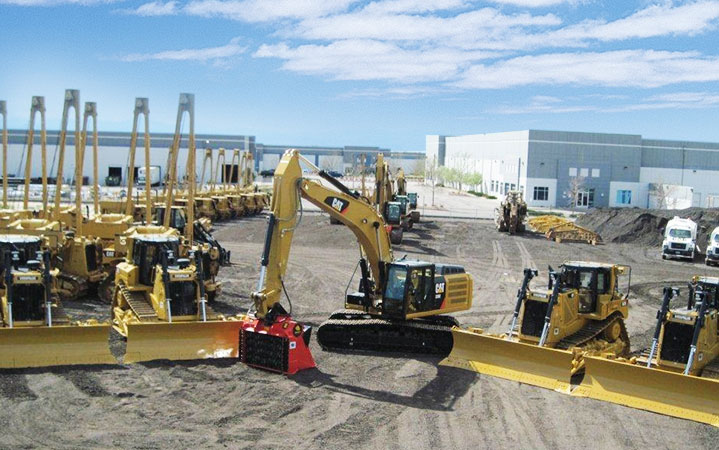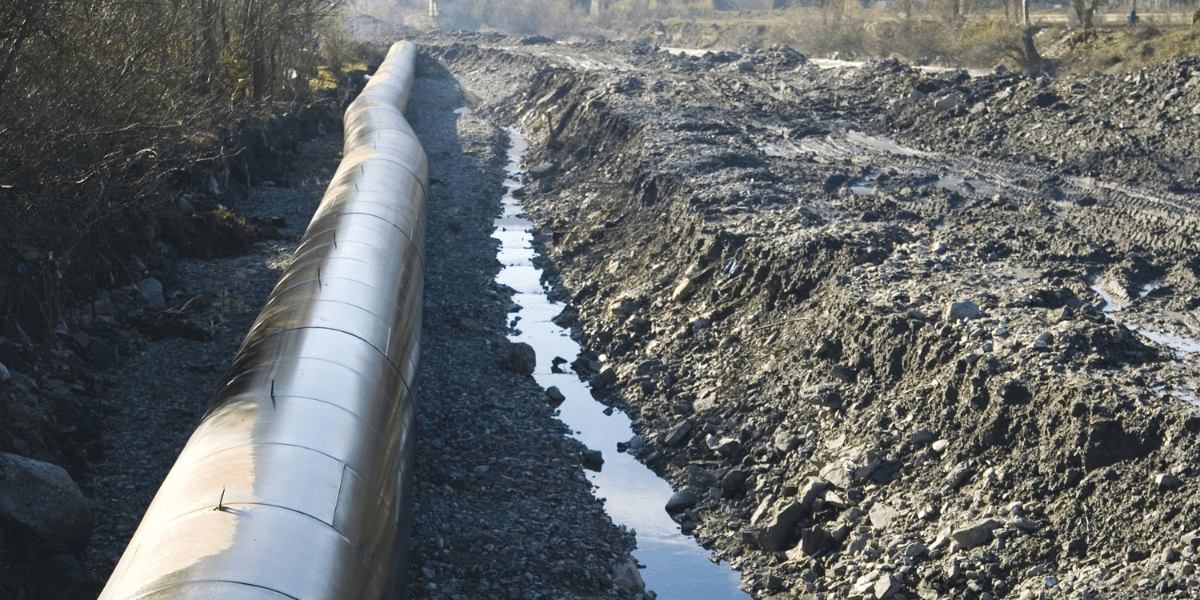Superior Rentals near me: how to find the most reliable rental services
A Comprehensive Overview to the Different Sorts Of Oil Field Equipment and Pipeline Equipment Available
The oil and gas sector depends heavily on customized equipment for reliable extraction and transport. Numerous kinds of equipment, from drilling rigs to tank, play important roles in this complicated procedure. Each item of tools offers unique features that add to general functional success. Comprehending these elements is essential for anybody associated with the industry. As the market progresses, so also do the modern technologies that sustain it. What innovations are on the horizon?

Drilling Rigs: The Backbone of Oil Expedition
Drilling rigs act as the crucial machinery in the domain of oil expedition, enabling business to gain access to hydrocarbon books buried deep beneath the Planet's surface area. These rigs are available in various kinds, including land rigs, offshore rigs, and mobile units, each developed to run in details environments. Geared up with advanced technology, piercing rigs can permeate geological formations with accuracy, making certain effective resource removal. The architectural integrity and functional capacities of these rigs are crucial, as they have to endure extreme conditions and substantial pressures. Moreover, the selection of an exploration gear influences the overall task price and timeline, making it an important consideration for oil business looking for to enhance their exploration initiatives and make best use of efficiency in their operations.
Pumps: Essential for Fluid Activity
In the oil extraction procedure, the function of pumps is substantial, assisting in the motion of liquids throughout various phases of manufacturing. Pumps are vital for moving petroleum, water, and other liquids from underground storage tanks to the surface and after that with pipelines to refineries. They come in numerous types, including centrifugal, favorable displacement, and completely submersible pumps, each offering specific objectives based on the fluid attributes and operational needs. Centrifugal pumps are typically utilized for their effectiveness in high-flow applications, while positive variation pumps stand out in dealing with viscous liquids. The selection of pump influences total efficiency, functional security, and maintenance costs. Proper selection and maintenance of pumps are important for optimizing production and lessening downtime in oil field procedures.
Shutoffs: Managing Circulation and Pressure

Valves play an important duty in handling the circulation and stress of fluids within oil areas and pipes. Numerous sorts of valves serve unique applications, each made to satisfy details features fundamental for reliable operation - Superior Rentals midland. Understanding the characteristics and usages of these shutoffs is crucial for enhancing system performance and safety
Kinds of Valves
Vital parts in oil area procedures, valves play a vital function in managing the circulation and stress of liquids within pipelines and tools. Different types of shutoffs are made use of to satisfy the varied requirements of oil and gas manufacturing. Typical types consist of entrance shutoffs, which give a straight-line flow and minimal stress drop; world shutoffs, recognized for their throttling capacities; and ball shutoffs, acknowledged for their fast on/off control. Additionally, check valves protect against backflow, while butterfly valves provide a light-weight remedy for managing circulation. Each shutoff kind is developed with specific materials and setups to endure the extreme conditions frequently found in oil areas, making certain integrity and performance in procedures. Recognizing these types is essential for efficient system administration.
Valve Applications and Functions
While different kinds of valves serve unique objectives, their primary applications focus on regulating circulation and stress within oil and gas systems. Shutoffs such as gate, world, and round shutoffs control liquid motion, making sure peak performance and safety and security. Entrance valves are commonly used for on/off control, offering marginal flow resistance. Globe valves, on the various other hand, offer exact circulation policy, making them ideal for throttling applications. Ball valves are favored for their fast operation and limited securing abilities. Furthermore, pressure safety valve are vital for stopping system overpressure, protecting devices stability. Overall, the proper option and application of shutoffs enhance operational effectiveness, making sure the reliable transport of oil and gas via pipelines and handling centers.
Compressors: Enhancing Gas Transport
Compressors play an important function in the efficient transportation of gas, ensuring that it moves efficiently through pipes over fars away. These tools raise the stress of gas, enabling it to get over friction and altitude changes within the pipeline system. Furthermore, compressors help with the harmonizing of supply and need, fitting changes in intake and production prices. Various website sorts of compressors are used in the sector, including centrifugal, reciprocating, and rotating screw compressors, each offering distinctive advantages based upon the operational needs. Normal upkeep of these compressors is vital to take full advantage of efficiency and lessen downtime, eventually adding to a trustworthy gas transportation network. Their important function emphasizes the relevance of compressors in the overall oil and gas framework.
Storage Tanks: Safe and Reliable Liquid Monitoring
Effective transportation of gas counts on various sustaining systems, among which is the correct administration of tank. These tanks play a necessary duty in securely containing liquids, making certain that functional effectiveness is maintained while minimizing ecological dangers. Built from long lasting products, they are made to withstand high stress and destructive components. Correctly sized and strategically situated, storage space containers help with the smooth flow of gas and other liquids, avoiding bottlenecks in supply chains. Routine upkeep and monitoring are necessary to find leaks or architectural concerns, promoting safety and conformity with regulatory standards. Inevitably, the effective administration of storage tanks is vital for the general stability and dependability of the oil and gas industry's fluid handling systems.
Pipeline Solutions: Framework for Transportation
Pipeline systems work as the foundation of the oil and gas market, helping with the reliable transport of hydrocarbons over large distances. These systems contain various parts, including pipelines, valves, pumps, and compressors, all thoroughly developed to assure seamless circulation. The products utilized in pipeline construction, typically steel or high-density polyethylene, are picked for resilience and resistance to rust. Pipeline networks can extend across land and water, connecting manufacturing sites to refineries and circulation facilities. Furthermore, advanced modern technology makes it possible for real-time monitoring of flow rates and pressure degrees, enhancing operational efficiency. The critical positioning of these pipes decreases environmental influence while making best use of source accessibility, thereby playing a crucial function in conference power needs around the world.
Security Equipment: Making Sure Worker and Environmental Defense
The operation of pipeline systems, while essential for power transportation, also presents considerable safety and security challenges for employees and the atmosphere. Safety devices plays a considerable role in minimizing these risks. Personal protective devices (PPE) such as helmets, handwear covers, and non-slip shoes safeguards employees from physical dangers. Additionally, gas discovery systems check for leakages, making sure that hazardous materials do not pose a hazard to personnel or the surrounding community. Emergency shutdown systems are imperative for rapidly stopping procedures during a situation, protecting against possible disasters. Spill containment materials, including absorbents and barriers, are fundamental for reducing environmental influence. Overall, purchasing all-inclusive safety and security tools is critical for preserving functional stability and shielding both workers and the environment in the oil and gas sector.

Frequently Asked Concerns
How Do I Choose the Right Oil Field Equipment for My Job?
Selecting the appropriate oil field tools involves evaluating project requirements, budget plan restrictions, and functional requirements. Take into consideration aspects such as tools reliability, compatibility with existing systems, and the distributor's online reputation to guarantee peak efficiency and safety and security.
What Are the Upkeep Needs for Oil Field Equipment?
Maintenance requirements for oil field tools include regular inspections, lubrication, and timely repair services. Operators needs to also follow producer standards, monitor efficiency metrics, and warranty compliance with security guidelines to improve longevity and efficiency.

How Can I Make Certain Conformity With Environmental Regulations?
To guarantee conformity with ecological laws, companies have to perform normal audits, apply best techniques, purchase training, preserve correct paperwork, and stay upgraded on regulations (Superior Oilfield pipeline equipment rentals). Collaboration with ecological agencies can also enhance adherence to regulations
What Is the Average Life Expectancy of Pipeline Equipment?
The typical lifespan of pipeline devices normally varies from 20 to 50 years, depending on factors such as worldly high quality, ecological problems, and maintenance practices. Routine inspections can greatly affect long life and operational effectiveness.
How Do I Safely Transport Oil Field Equipment to Remote Locations?
Moving oil field devices to remote places needs mindful preparation, including route evaluation, safeguarding permits, using proper automobiles, and ensuring safety methods are followed. Appropriate training and interaction among teams are crucial for successful transportation.